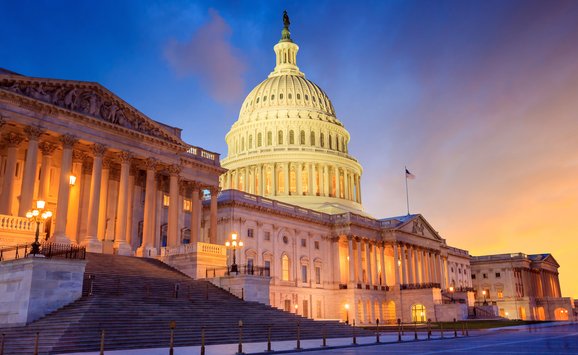Later this summer, the US Environmental Protection Agency (EPA) will release its final Clean Power Plan, setting carbon emissions limits for existing power plants. Together with a final rule setting standards for new power plants, EPA will create the first nationwide limits on carbon emissions from coal and and natural gas power plants, the largest source of emissions in the US economy.
Proposals for the new- and existing-source rules have been discussed for over a year, sparking controversy over their environmental benefits, likely costs, legality, and design. EPA sought comment on many of these issues and may address them in the final rule. Over the next two weeks, in a new blog series—What to Watch For in EPA’s Final Clean Power Plan—RFF experts will highlight in 10 posts what we will be looking for when the final Clean Power Plan regulations are released (plus, in a bonus post, things to look for in the contemporaneous new source rule).
We begin with timing for implementing the rule. In the proposed Clean Power Plan, states are given emissions rate targets, or roughly equivalent emissions (mass) budgets, that their power sector must meet. It’s possible that the stringency of these targets or the way they are calculated will change in the final rule when it’s released later this summer (more on how this might happen in other posts to come in the series). But an equally important feature of the rule is when states will have to meet the targets. The longer states have, and the more flexible their timeline is, the easier (and less costly) it will be to meet the targets. But delays will also mean greater emissions in the meantime, making it harder to meet international commitments the United States may make and, ultimately, harder to reduce the risk of climate change.
In last year’s proposed Clean Power Plan, EPA set two targets for each state—an interim goal and a final goal. The final goal was simple—it had to be met by 2030 (and thereafter, based on a three-year average). The interim goal, on the other hand, had to be met on average in 2020-2029. In other words, a state didn’t need to meet the interim goal in any particular year, but years in which it failed to meet the goal would need to be balanced by years in which it exceeded the target. In practice, this presumably would mean states ramping up over time—overshooting the target initially and then doing better as the decade went on. This gives states some crucial flexibility to implement the plan over time. Moreover, states that collaborate in multistate plans will be able to spread emissions cuts geographically among themselves as well as over time. (Note that this flexibility doesn’t mean states can make things up as they go—whatever strategy they adopt must be made explicit in a plan submitted to EPA).
Nevertheless, many states have complained that EPA’s goals are unrealistic or treat them unfairly. Achieving the goals of the Clean Power Plan will require shutting down coal power plants and a rapid increase in the utilization of existing natural gas facilities, along with new contributions from renewable energy and energy efficiency. These changes take time. For example, increased natural gas generation may require new pipelines that take years to construct, and increasing renewables requires new wind farms or solar installations.
If only they had more time, these states say, they could do what EPA is requiring. Some have called this problem the “2020 cliff”, though calling it a “cliff” isn’t really accurate because states don’t have to meet the goal in full in 2020—delays won’t mean states violate the Clean Power Plan targets, but they will have to cut emissions significantly later in the decade to compensate, possibly at high cost. In extreme cases, it could even result in states being forced to do more in 2029 to make up their interim goal “debt” than the 2030 final goal requires.
For many states, even those that broadly support the plan, these timing issues are major concerns. However, timing of emissions reductions is one area where EPA may have the most latitude to make concessions. EPA might, for example, provide greater flexibility by signaling that they will accept even more back-loading of emissions reductions than they have indicated in technical documents. One small way to do so would be to allow states an additional year by including 2030 in the interim goal period—after all, if states’ performance in the last years under the interim goal is better than the final goal, then the final goal doesn’t mean very much.
Also, we might see some changes that may soften the interim goals in specific states. Many states have complained that EPA has unfairly denied them credit for emissions-cutting actions they have already taken or are taking now, such as retirements of coal units and new investments in nuclear or renewables that occurred before 2012, EPA’s baseline year. Giving states credit for some of this “early” action effectively gives states a head start on meeting the interim goals (albeit at the cost of fewer overall emissions cuts). For example, new nuclear plants still under construction in South Carolina and Georgia don’t receive credit in the states’ targets in the proposal are already counted in the states’ targets, putting great pressure on these states to reduce emissions from their fossil power fleets, especially if the new plants run into problems. This may change in the final rule, allowing the states to count these nuclear plants’ contributions to fleet-wide goals. Changes to other states’ targets, for any of a number of technical reasons, are also possible. Even seemingly minor changes could have major impacts for individual states.
More broadly, EPA may have more flexibility to make adjustments to compliance timing that affect the stringency of the Clean Power Plan in its early years than it did when the proposal was issued last year. After the 2009 climate talks in Copenhagen, focus was on what the United States and other major emitters would accomplish by 2020. But in looking forward to the Paris climate negotiations in December, the international focus has shifted to 2025 or even later goals. A strong US pledge for 2025 is now a good negotiating position. Such a pledge is possible under a somewhat more flexible Clean Power Plan, with emissions reductions to some degree shifted from the early 2020s to later in the decade, as long as the interim goal for 2025 is retained.
This makes easing states’ timetables for compliance, or changing how their baselines are calculated, among the easiest ways for EPA to address critics and get on-the-fence states on its side. There are signals from some stakeholders that they expect that EPA is considering easing compliance timelines in the rule (as well as changing how new nuclear generation is counted). Such changes shouldn’t necessarily be perceived as weakening the rule, but rather are likely to be an appropriate reaction to comments from parties (including states) with better technical information than EPA had when it created the proposal.
Read the other posts in the series, What to Watch For in EPA’s Final Clean Power Plan:
- Inside the Fence: Keep an Eye on Cofiring under the Clean Power Plan
- What Will EPA Do If States Won’t Play Ball?
- The Promises of Multi-State Compatibility
- Controversy over the New Source Rule, but Does It Even Matter?
- More Guidance from EPA on “Outside the Fence” Measures
- Protecting Electricity Reliability
- Can EPA Head Off Legal Challenges?
- Trading
- When Do New Plants “Exist”?






